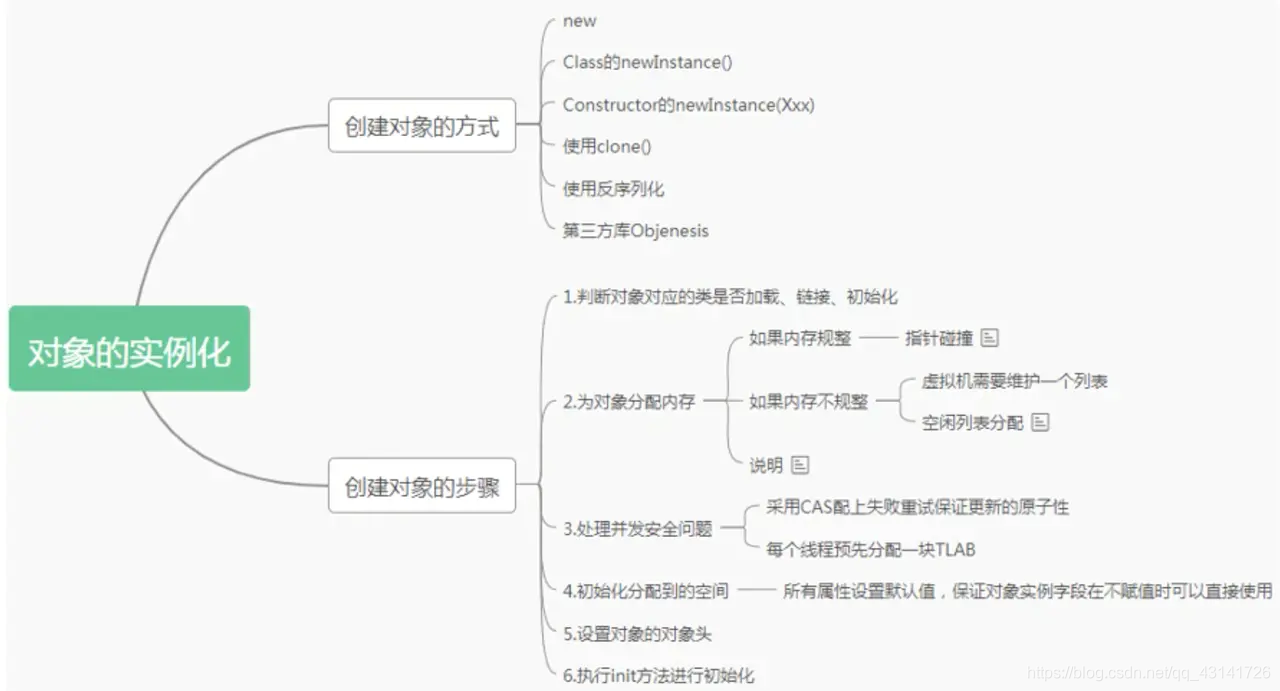Article Directory
1. The instantiation of the object

1.
-
new
- The most common way
Variation 1: Static method of Xxx
Variation 2: Static method of XxBuilder/XxoxFactory
- The most common way
-
Class's newInstance(): The reflection method can only call the constructor of the null parameter, and the permission must be public
-
Constructor's newInstance (Xxx): in a reflective way, you can call the constructor with empty and parameterized parameters, and there is no requirement for permissions
-
Use clone(): do not call any constructor, the current class needs to implement the Cloneable interface and implement clone()
-
Use deserialization: get a binary stream of an object from a file and from the network
-
Third-party library Objenesis
-
Determine whether the class corresponding to the object is loaded, linked, initialized
-
Allocate memory for the object
-
If the memory is regular and a pointer collides
-
If the memory is irregular:
- The virtual machine needs to maintain a list
- Free list allocation
-
-
Dealing with concurrency security issues
- Use CAS with failed retry to ensure update atomicity
- Each thread is allocated a TLAB in advance
-
Initialize the allocated space-all properties are set to default values to ensure that the object instance fields can be used directly when they are not assigned.
Set the object header of the object -
Execute the init method to initialize
2. Object memory layout
1. Header: Runtime metadata Markword and KlassInstance type pointers
2. Instance data InstanceData
3. Padding alignment and padding
public class CustomerTest {
public static void main(String[] args) {
Customer cust = new Customer();
}
}

3. Access location of the object
How does the JVM access its internal object instances through the object references in the stack frame? -> Positioning, accessed through reference on the stack

1. Handle access

2. Direct pointer (adopted by HotSpot)
